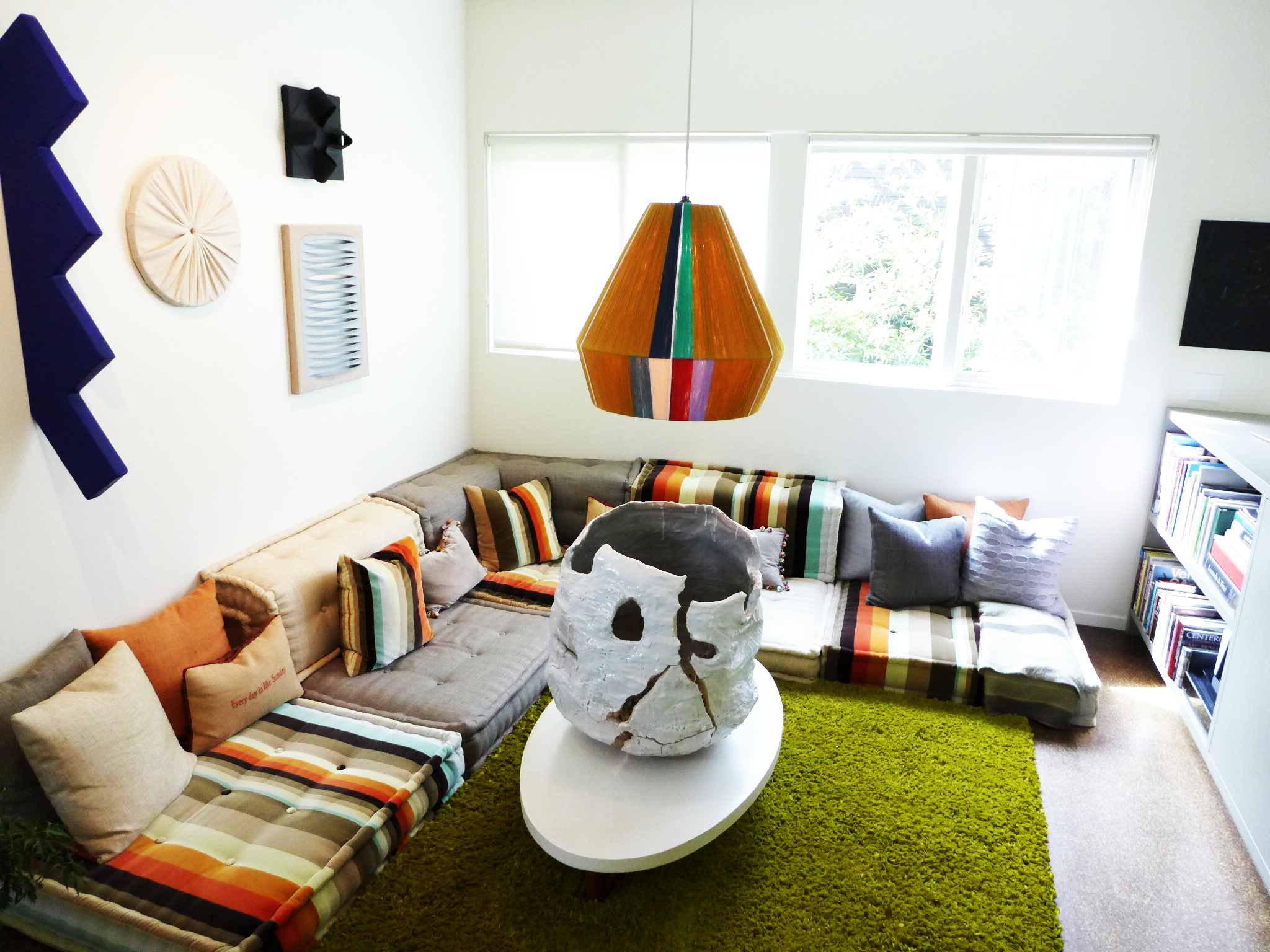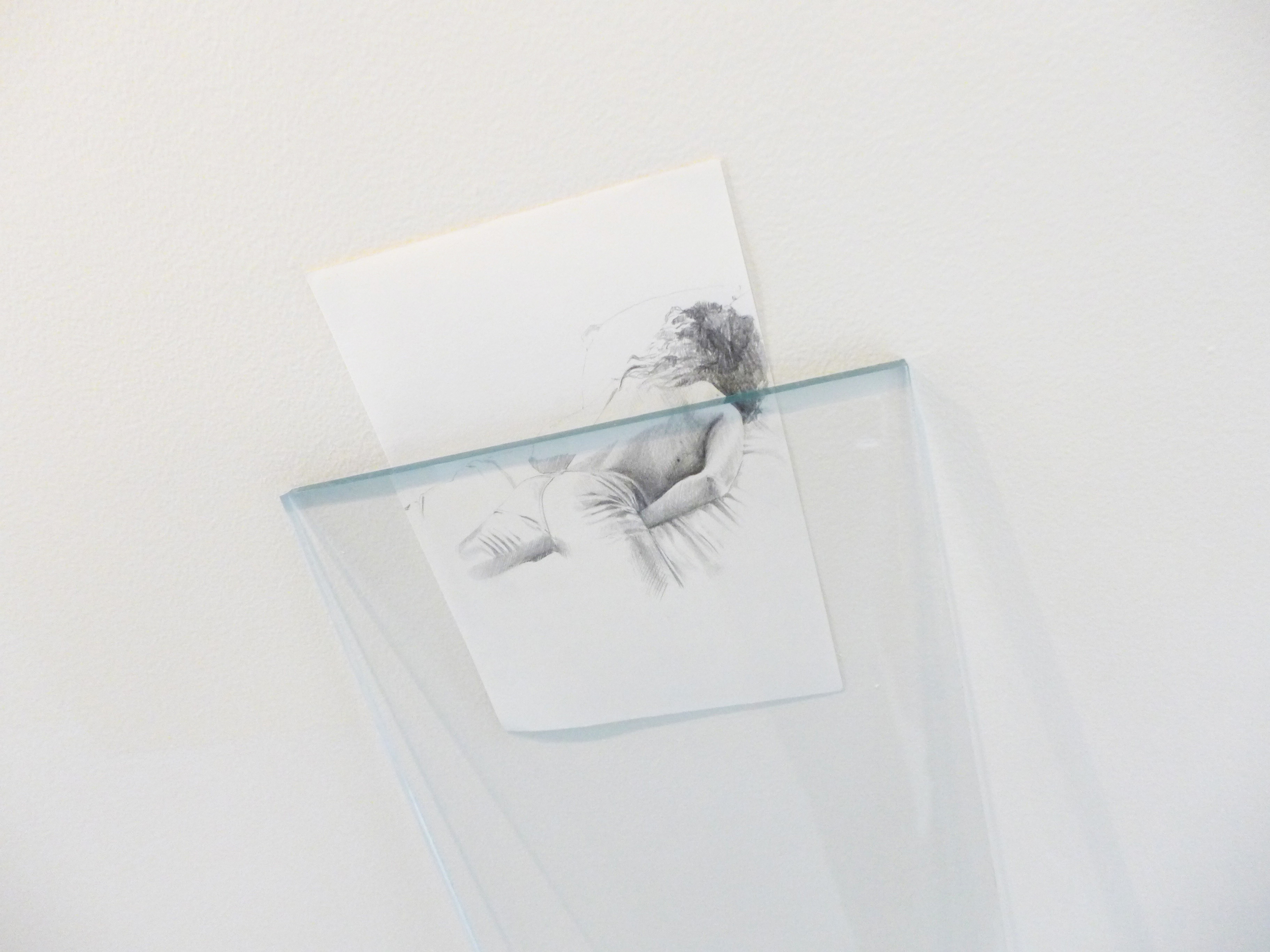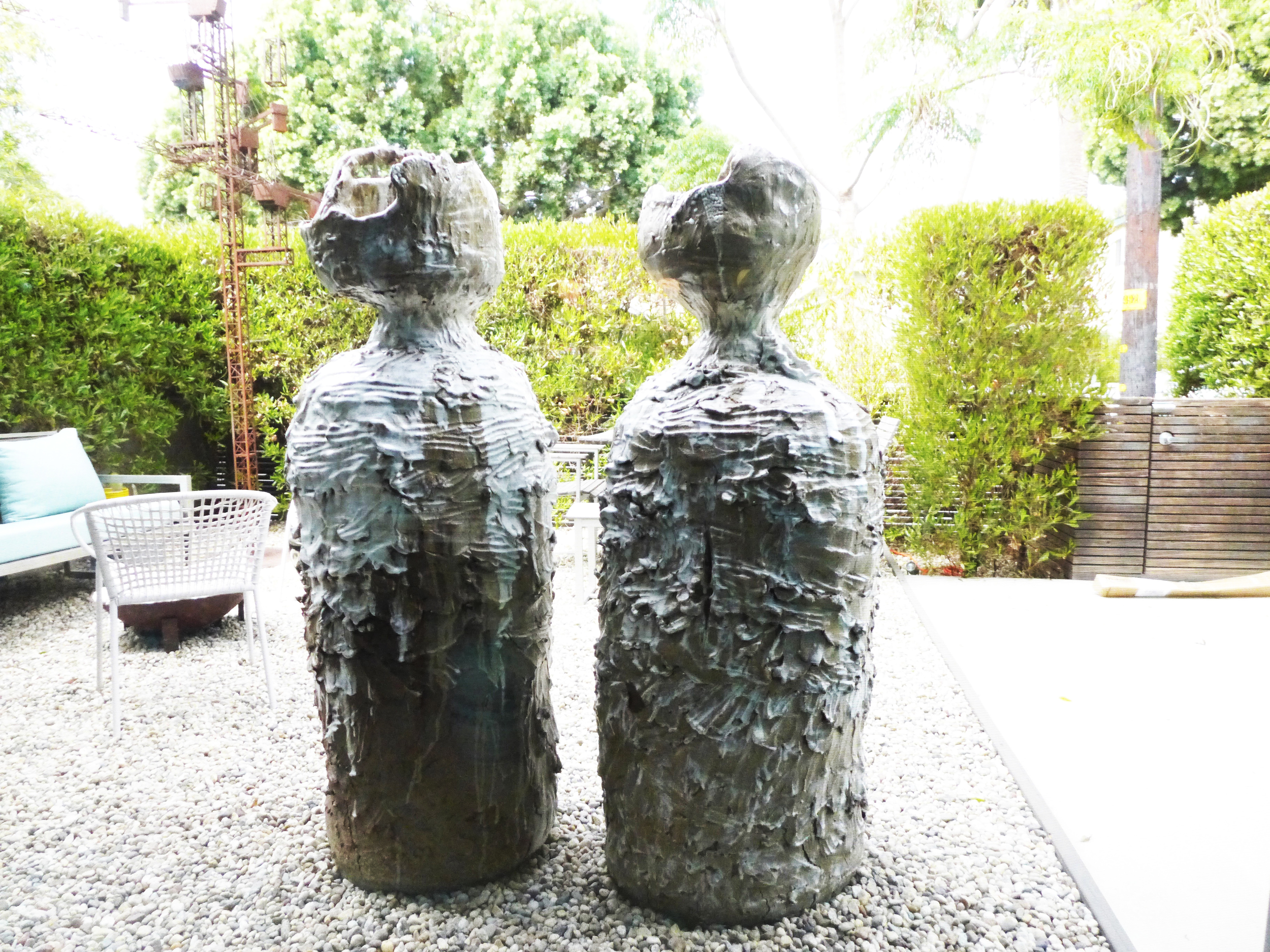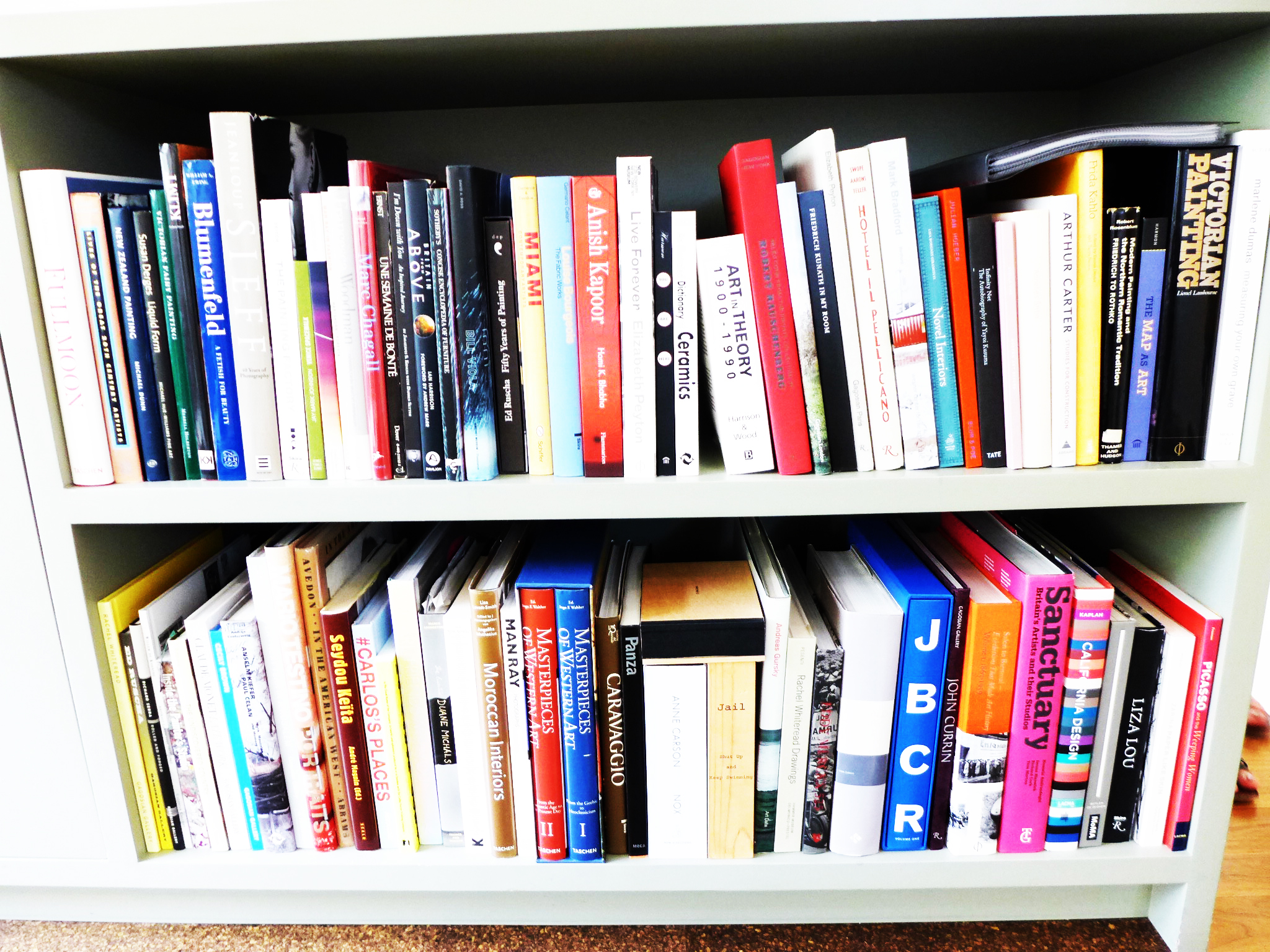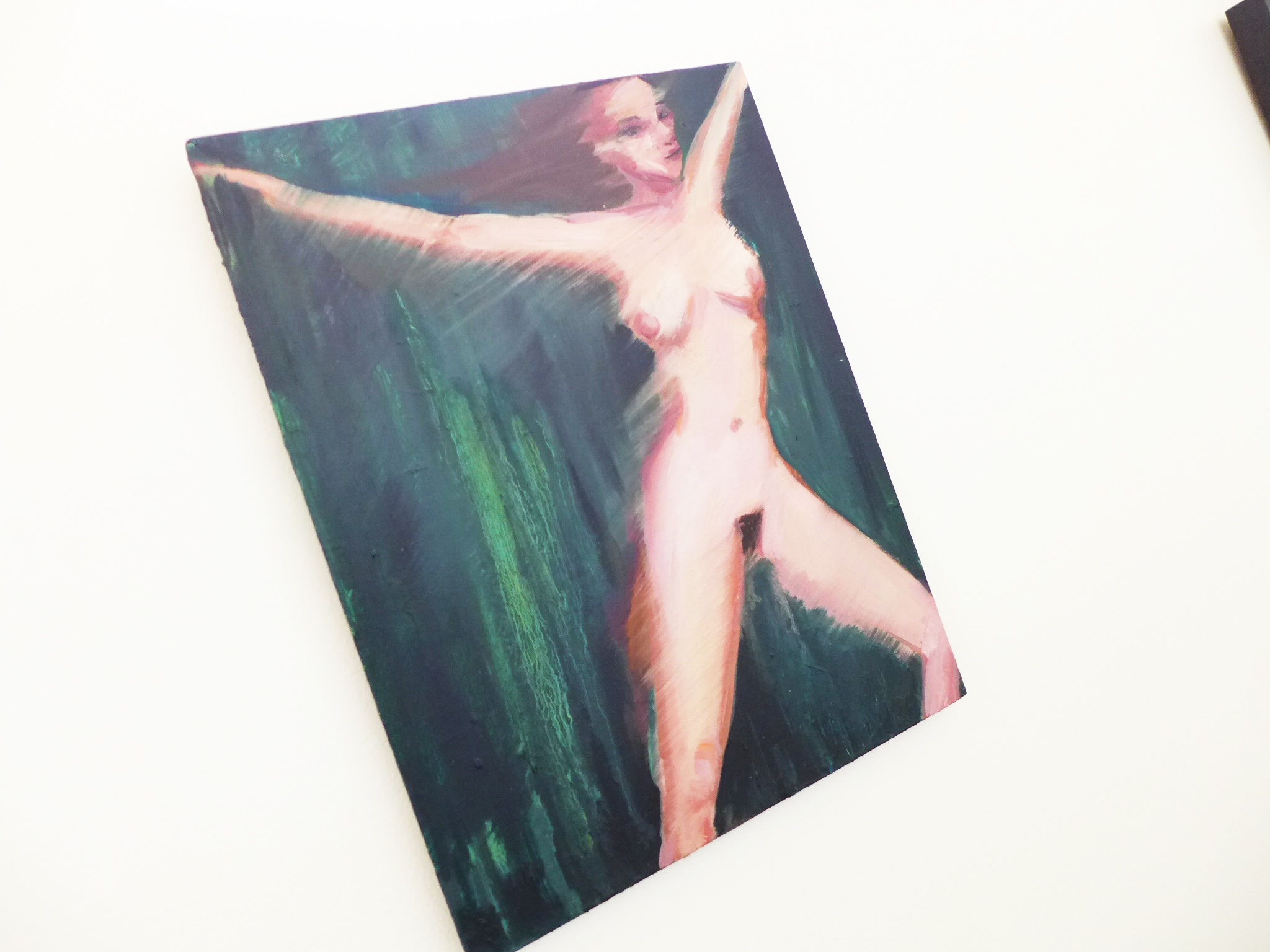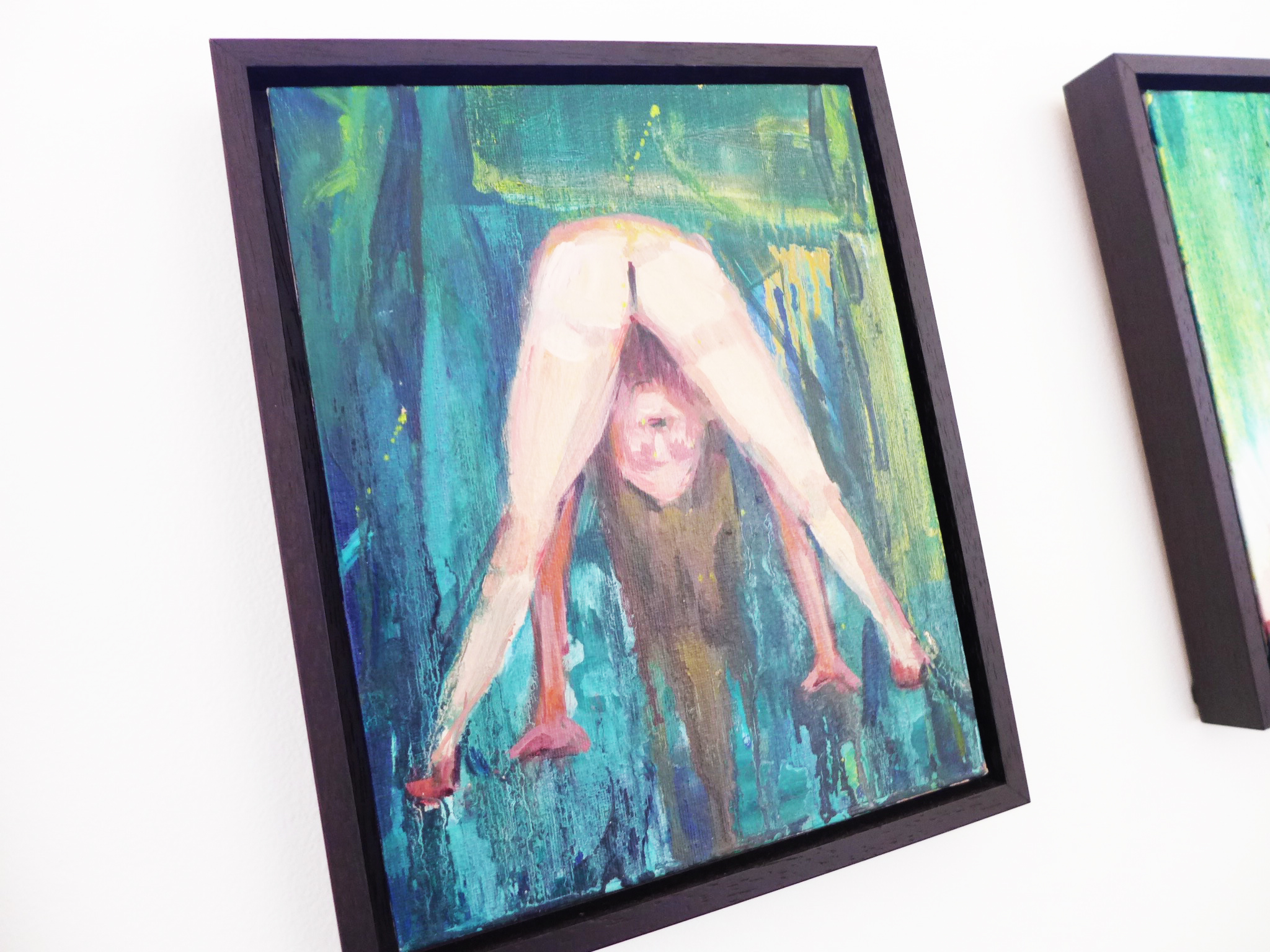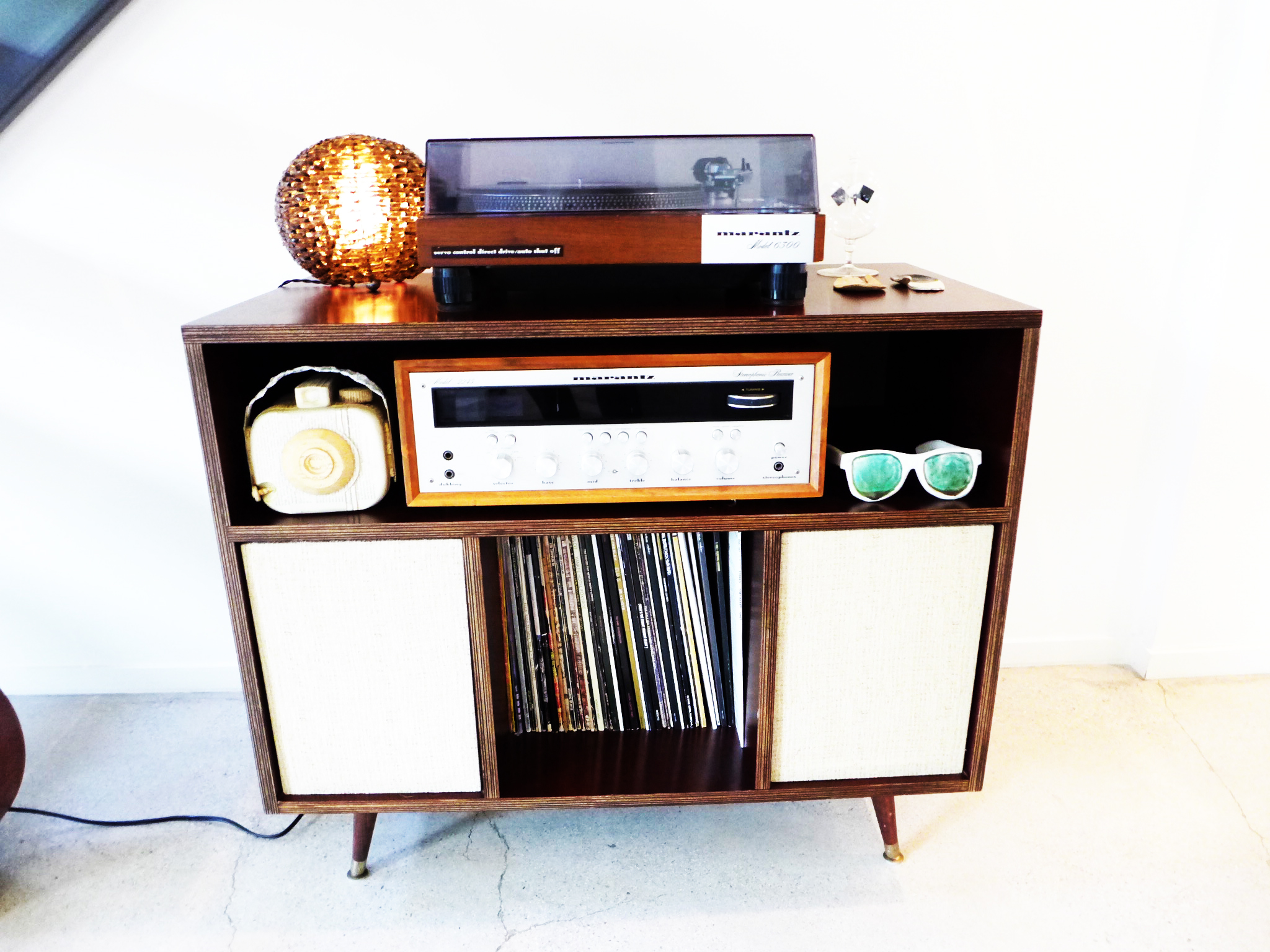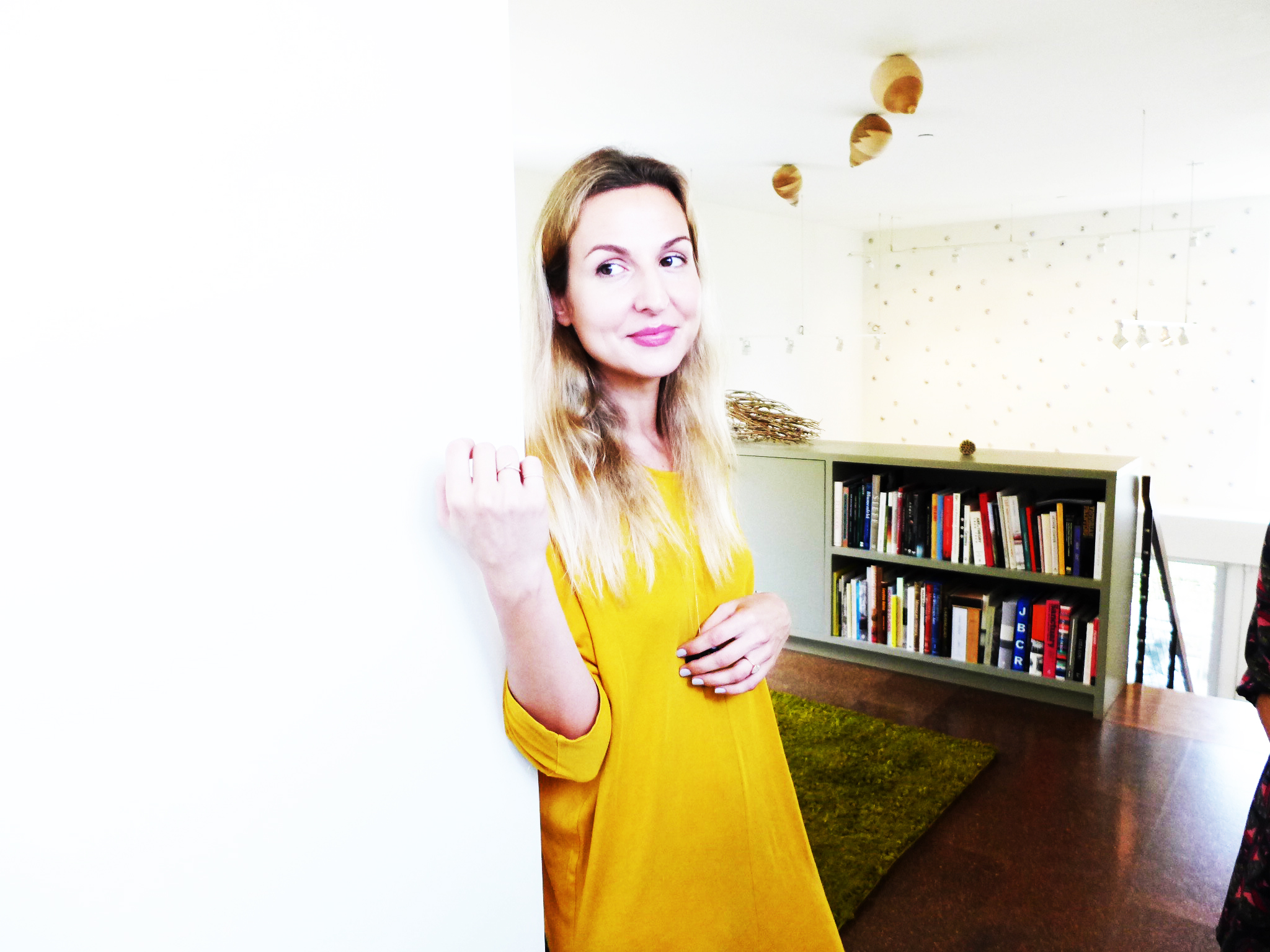Step into Claressinka Anderson’s beautiful, but modest-by-comparison, contemporary home on the border between Santa Monica and Venice Beach in Los Angeles and you are stepping into a new breed of art gallery: part home, part gallery, and part breeding ground for ideas. Lately, there is a trend amongst gallerists – from Los Angeles to New York to Miami – who are eschewing the traditional white-walled platform and exposing art in a much more organic environment; one that is conducive to conversing, socializing, and yes, collecting. But this platform of showing art is not new – the French nobility and wealthy patrons of the arts have a long history of turning their homes into art galleries. In fact, they were the first art galleries. It was only in the 20th century, when art became much more of a global enterprise, that art needed a much more “professional” environment – a storefront to show an artist’s work – and thus the traditional gallery was born. But sometimes, the stark atmosphere of a gallery can be intimidating for collectors – new and experienced. This is where Marine Projects and Marine Salon comes in. Claressinka Anderson – its founder – is much more interested in the introduction between artists and collectors, as well as the innovation of ideas. What better place for this conduction than her home, with it’s open floor plan, double-height walls, and an intimate courtyard. You feel at home and the art you see on the walls makes much more sense that way. Last week, Anderson invited us into her home for a chat – Salon No. 13 was in full swing with works by up-and-coming artist Fay Ray lining the walls, sculptures by Galia Linn guarding the entrance, and other works perfectly placed as if they’ve been there all along. There is something undeniably glamorous about Anderson. She is knowledgeable about the arts, passionate about the arts and has a deep appreciation for the allure of art. In our interview, we chat about her early interests in art, the impetus for turning her home into an art gallery and how Morrissey lyrics can become a powerful philosophy for living life.
OLIVER KUPPER: So, what made you decide to start a salon style gallery in your home?
CLARESSINKA ANDERSON: I was interested firstly in the historical salons from France - the 17th and 18th century salons and then going into the 19th century. I think the very first salons, although there’s not a lot written about them, were actually from the 16th century and were in China.
I had always been really fascinated by the idea of these intellectual gatherings around art and literature and music that took place in people’s homes. So I was interested in re-contextualizing that in the contemporary art world and making contemporary art accessible for young people and people that are potentially interested in starting to collect.
OK: What are some of your earliest experiences with art?
CA: I grew up in London, and I have my parents to thank for exposing me to art from a very early age. They weren’t really into contemporary art, but they were very much into the arts in general. Theatre and music, and they took me to museums. I don’t have any particular memories of it, but I’ve been told by my mother that I was always drawn to, as she would say, the avant-garde. Which I think for her was more like modernism, but that’s what I was really drawn to. When I was five I became obsessed with Picasso, so it started pretty young. I would ask her to take me to the National Gallery and I would actually copy Picasso’s paintings into a little sketchbook I had. She still has some of my weird little rudimentary drawings of boobs.
OK: Did your parents collect art?
CA: They did, but like I said, not contemporary. They collected kind of more traditional, and some modernist influenced art, but not actual modern art. They didn’t have the money for that kind of thing.
OK: So, you started Marine Projects as a salon style gallery and then you shifted things into a more traditional setting and then back again – what was the reason for this?
CA: It just suits me and my character better. I’m also more of a free spirit, and not that I’m not a business woman, but you really have to be super super cutthroat to be a top tier dealer, I think. I’m just not really that person. And I think if you had done this interview with me a couple years ago I probably wouldn’t have even admitted that, but I feel comfortable saying that now. I’m more comfortable in myself now too - I’ve come to a place where I just really want to live authentically in the same way that I want to work with artists who have really authentic practices. And I struggled with it, I thought: am I really going to be this person? Am I really going to go to every single art fair? Am I going to do all these things that you have to do when you’re tied to that traditional model? And I just made the decision that actually, no I am not.
OK: So who are some artists that you’re really excited about right now?
CA: Well, to start, all the women artists in my current exhibition. Also, a couple of the artists I’ve worked with, Jow, in the back room who has a solo project, she was an artist at the gallery so I’ve worked with her before. And then Fay Ray, she was another artist who I’m working with again and I feel really deeply invested in her career. There’s also this young artist called Shoshi Kanokohata who just graduated from UCLA and he’s a sculptor. He’s working in ceramics and he’s doing really interesting work. I haven’t had a chance to work with him yet but I’ve bought one of his pots and I’d like to. He also does more conceptual pieces from his more traditional, more Japanese background throwing pots with the glazes. They’re just really, really beautiful. So I really respond to, and love his work. I collect ceramics, it’s something I’ve gotten into recently so he’s someone who I really like.
OK: So the home itself- did you look for a space that would accommodate the work, or what was that process like?
CA: I did actually. It wasn’t in a time when I had realized what I’d be doing yet, because I lived here for almost 2 years before I started the salons. But I definitely bought the house with showing art in mind. I didn’t necessarily think I’d have my own business out of here, at the time I was working with another gallery, but I knew that I wanted to collect and show work. I walked in here and I was amazed by how much space there was, for a house that’s at the end of the day not that big, on a lot that isn’t that big, I just thought the use of space was so fantastic. Particularly this double height wall and that raised wall above the front door, I was really inspired by the possibilities - these are dynamic spaces. I’ve had a lot of collectors come into this space who live in much bigger houses, and they are actually envious of how much wall space I have. It’s just really great for art.
OK: It is great, and it’s great for a salon.
CA: Yeah and I think it’s this really nice hybrid between home and gallery where it has a warmth to it. It’s a home, but it still has really tall walls. I was talking about it with Ariel Herwitz, and she was saying “I’ve shown my work in lots of galleries that have lower ceilings.”
"...You really have to be super super cutthroat to be a top tier dealer, I think. I’m just not really that person. And I think if you had done this interview with me a couple years ago I probably wouldn’t have even admitted that, but I feel comfortable saying that now."
OK: Absolutely. Are there any challenges between showing in a gallery setting and a home?
CA: It’s more just the opening of yourself to having a lot of random people in your house. You would think I’m a super open person, but I’m actually pretty private. So it’s funny that I’ve decided to do this, because I’ve really had to open myself to the idea. And it’s fine when I have people who I’ve already gotten to know a little bit, or I’ve had exchanges with. But sometimes I do get random emails from people and I have no idea who they are and they want to come by. I’m here by myself and I really don’t know, so there’s things like that where I’m a little unsure. I try and do a little bit of a check to figure out who everybody is before they come over.
OK: So I want to talk about some patrons of the art, or some other inspirations when it comes to salons. Can you name any specific people or institutions?
CA: I mean definitely; I’d have to say Gertrude Stein would be an obvious one for me. Because I actually really was looking at her for an inspiration for what she did in Paris- I mean she was essentially running a museum out of her home, and all these incredible people were involved. And she was also a collector, I mean she was a collector, a patron, an intellectual, a visionary. She would have to be my number one inspiration. I also read Peggy Guggenheim’s autobiography, or one of them a few years back and was really interested in her story too. The idea of how someone’s truly personal interest in art and love of art can then grow out into something that really educates a lot of people and brings it to a wider audience, same with Gertrude Stein. I am interested in that, and it being accessible. I think that oftentimes when you get to a certain level gallery, you no longer become accessible to a lot of people. That’s really not what I’m trying to do - my true inspiration is to start people off as collectors.
OK: So Marine Projects is like the gateway drug for collecting art.
CA: (Laughs) I like that.
OK: I mean, it’s addictive.
CA: No it’s hard! Usually in couples there tends to be one person driving the collecting a little more than the other, it just tends to be that way. With my husband, I’m recently married - I just got married in May, I’m definitely the one that drives the collecting. But he’s really open to it too. We will definitely continue to collect together.
OK: It’s addictive, but you also get to live with art. And that’s an amazing and beautiful thing- to live with art.
CA: You just reminded me of one thing that I’ve really learned, that’s very different from my experience of doing shows here versus at a regular gallery. I’m really cognizant of how much the energy of the home changes from show to show depending upon what work is in it. And because I’m living with it, you feel it differently than you do when you see it in a gallery. Obviously it’s the same thing, a gallery is a blank slate, it’s a white cube, and everything that goes into it also changes it. But something about actually living with it day to day - you know to have breakfast, taking a shower, being in it all the time, you really are affected by it. And I think that we are energetic beings and art has energy in it, it really does. When I de-install shows, there’s always a couple of days where there’s nothing on the walls and it feels so uncomfortable to me. It’s funny because the people who are living next door and renting the house, I went there a while ago and they don’t have anything on the walls. It’s just amazing to me that they just don’t live with any art - and so many people don’t.
OK: It’s a very weird thing.
CA: I get sad, and I start to feel kind of anxious when there’s nothing on the walls. With this particular show, I really love it, and it’s a great show to live with, but I’ve also specifically put pieces in shows that are a little bit difficult to live with sometimes, or things that I wouldn’t necessarily want to live with all the time. Because I think that we shy away from things that are uncomfortable. In terms of collecting, those are often pieces that work well in gallery settings but then people don’t actually want to take them home. So I’m trying to do that as well.
OK: But art should interrupt your life in some way.
CA: Exactly, exactly. So that’s another aspect of what I try and do here too. Same with Galia’s vessel upstairs on the coffee table like that. Proportionally it’s too big for that coffee table, but we really wanted it to be in the space.
OK: What is your advice to new collectors who are hesitant about collecting art? Is there a piece of advice that you always give them in one form or another?
CA: I actually do. For me, and I’m sure it’s different for every person, but I really say: you have to absolutely love every single thing that you buy. Irrespective of whether you think it’s a good investment, irrespective of all these things, which are things that should be taken into account - you know I always say that you don’t want to pay some sort of exorbitant amount of money for something that isn’t worth it, and it is important to research. But at the end of the day none of that matters because it could all fall apart anyway. So the question is: will you be happy with that thing on your wall? Or on the floor? Wherever it is, you have to love it.
OK: Okay, last question, we noticed some pillows upstairs with Smiths and Morrissey lyrics – is there a story behind those?
CA: That’s kind of a cool story, it’s a little more personal. So there’s this artist, Lisa Borgnes Giramonti, and she did these hilarious tongue in cheek, needle point paintings. They were poking fun at Hollywood and botoxed ladies and all these things. I really am drawn to text-based work just in general, and I had gone over to her house just to do a studio visit and she had one of these pillows in her house. Because I knew she did a lot of needlepoint stuff I figured she had done it herself, and she said “yes, I’ve kind of just been doing them for friends… a little side project.” And I liked the Smiths growing up, so I saw the sweetness I was only joking one and I really liked it, so I asked her if I could have that one and she said yes so I bought it from her. When I met my now-husband, I found out that he was a major Morrissey fan which was just a super funny thing. I mean I liked the Smiths, but he was a huge fan, and I thought that was pretty funny because I grew up in London and he grew up in Cupertino. So quite soon into our relationship, it was his birthday and I contacted Lisa, and she actually made one for him. And then I gave it to him as a gift for his house. I think in the back of my mind, I was always thinking that at some point the pillows are going to be together! So now they are. Another layer to the Everyday is Like Sunday, is that Sunday is our special day and it’s the one day of the week that we always spend together unless one of us is traveling. So it became this almost philosophy for us, that we were going to live our lives with an Everyday is Like Sunday attitude.
Salon No. 13: Works 373 – 417 will be on view until November 21, 2015 At Marine Art Salon – you can send an email or call to make an appointment. text and photography by Oliver Maxwell Kupper. Follow Autre on Instagram: @AUTREMAGAZINE

